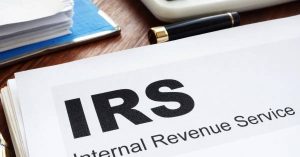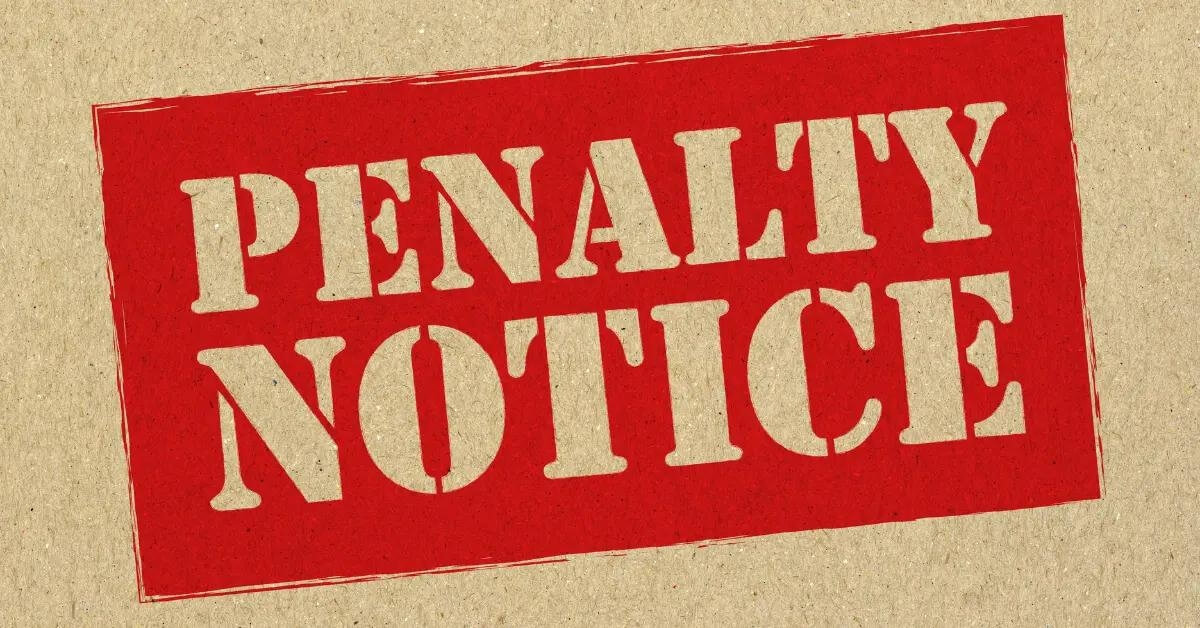When you’re a business owner, you know one of the most valuable assets for your business is your employees. A good team can make the difference between growing your company or see it stagnate. You’re always looking for ways to ensure that you attract and keep the best talent. Which is why you should be aware of important employee benefit IRS forms.
One way to attract and retain the best employees is with an amazing benefits package. From time off to comprehensive insurance policies, you’re always looking to offer the benefits that mean the most to your employees. You probably offer some type of retirement fund or matching program to an IRA.
Because many of these benefits have a monetary value, you need to report many of them to the Internal Revenue Service (IRS). In some cases, it saves your employees money since they don’t pay taxes on retirement funds until they take the money out of the account. This makes it essential that you understand IRS forms related to employee benefits. Here are some common employee benefit IRS forms you need to know.

General Instructions for Certain Information Returns
There are some employee benefit IRS forms that are similar and have almost identical instructions so they get grouped together. You can discover the general instructions for these employee benefit IRS forms. These employee benefit IRS forms include:
- Form 1096
- Form 1097
- Form 1098
- Form 1099
- Form 3921
- Form 3922
- Form 5498
- Form W-2G
New Items and Recent Changes
Of course, the IRS has new information available about recent changes. It seems that they’re always updating forms and laws. This can include updates to employee benefit IRS forms. Here’s what you need to know about these general forms updates.
- Name matching and TIN requirements: On the filer’s taxable 94X series return, the TIN must match exactly the name provided on the form. You may face information return penalties if they don’t, and the IRS returns and rejects the paperwork.
- Form 1099-NEC: Form 1099-NEC is a new form. It was created by the PATH Act. It also forced a more immediate return date on filing the 1099 and that includes the nonemployee compensation (NEC) to January 31. The new Treasury Regulations stopped the automatic extension that used to accompany the NEC form. For this reason, the IRS created the 1099-NEC that must be filed by February 1, 2021.
- Continous use forms: The following forms have switched from annual updates to continuous use:
- Form 1097-BTC
- Form 1098-C
- Form 1098-F
- Form 1098-MA
- Form 1098-Q
- Form 1099-CAP
- Form 1099-LS
- Form 1099-LTC
- Form 1099-OID
- Form 1099-Q
- Form 1099-SA
- Form 1099-SB
IRS Form 1096, Annual Summary and Transmittal of U.S. Information Returns
Sometimes, you need to send specific forms to the IRS. This form allows you to transmit specific forms to the IRS; however, you can’t file it electronically. Here are the forms that need the Form 1096 to transmit it:
- Form 1097
- Form 1098
- Form 1099
- Form 3921
- Form 3922,
- Form 5498
- Form W-2G
When you transmit this form, you need an official copy of Form 1096 and not one printed from the IRS website.
Who Needs to File Form 1096?
If you are a person or entity who must file any of the forms found on Line Six of Form 1096, then you must also file this form with the others. You need to submit an original, scannable form. This employee benefit IRS form allows you to transmit the other forms to the IRS.
When Do You Need to File Form 1096?
The date you need to file Form 1096 is directly related to the forms that you’re transmitting with it. Not all of the forms have the same due date. Here are the essentials:
- February 1, 2021: You must file your Form 1096 with Form 1099-NEC by this date.
- March 1, 2021: Fill out and file Form 1096 to transmit any single or combination of the following Forms 1097, 1098, 1099, 3921, 3922, or W-2G
- June 1, 2021: You must submit Form 1096 when you file Form 5498.
IRS Form 1099-R, Distributions from Pensions, Annuities, Retirement or Profit-Sharing Plans, IRAs, Insurance Contracts, etc.
You need to fill out a Form 1099-R for anyone you made a designated distribution of funds to that exceed $10. This includes instances of:
- Retirement plans and profit-sharing
- Charitable gift annuities
- All individual retirement arrangements (IRAs)
- Payments received for permanent and total disability under a life insurance plan
- Annuities, insurance contracts, pensions, and survivor income benefit plans.
What’s New for IRS Form 1099-R?
With the IRS constantly updating its forms and Congress creating new tax laws, there always seems to be something you need to know to successfully file all the appropriate forms. Here’s what you need to know about recent changes to Form 1099-R.
- Receiving an early payment from a retirement plan for the birth or adoption of a child: If you’ve had a birth or adoption that qualifies for the exemption from the 10% early distribution tax, then you need to fill out this form. This is a distribution of funds that you can repay at a point in the future. Section 113 of the Setting Every Community Up for Retirement Enhancement Act of 2019 (SECURE Act) provided for the disbursement of up to $5,000 for an adoption or birth event.
IRS Form 5300, Application for Determination for Employee Benefit Plan
Sometimes, you decide on a benefit plan but you aren’t sure if it will have positive or negative consequences for your employees. Before implementing a benefit plan, you can use Form 5300 to determine the status of the employee benefit plan or trust.
Who Can File for a Determination Letter?
There are many instances when someone might need a determination letter (DL) before moving forward with a plan. Some of the people or entities that need to fill out this form include:
Individually Designed Plans
Either an employer, such as a sole proprietor, partnership, or corporation, or plan administrator can request a DL letter to determine its status if the plan has:
- Despite the original date of adoption of the plan, it hasn’t received a DL.
- Under current IRS guidance, the plan is eligible to receive a new determination despite requesting a DL in the past.
Volume Submitter and Master and Prototype Plans
An employer or plan administrator can apply for a DL for both volume submitter and master and prototype plans. The IRS offers a specific period when you can apply for the DL. You must submit this form to the Covington, Kentucky office of the IRS to receive a determination.
IRS Form 5305, Traditional Individual Retirement Trust Account
IRS Form 5305 meets the requirements of section 408(a) to create a model trust account agreement. It’s important to note that the IRS has only reviewed Articles I through VII. Both the individual (grantor) and the trustee must execute the document before it becomes a traditional individual retirement trust account (IRA).
You must establish the traditional IRA no later than the individual’s due date for taxes to make a contribution to it for the period of a year. You need to make sure that the account is created in the United States, and it’s for the benefit of the grantor and his or her beneficiaries. You keep IRS Form 5305 for your records but you don’t file it with the IRS.
Definitions
Sometimes, employee benefit IRS forms can be confusing. The IRS and tax professionals use their own jargon so you might need to brush up on some of the most common definitions.
- Grantor: This is the person or group that initially starts the account.
- Trustee: To be considered a trustee, it must be a bank or savings and loan association, as defined in section 408(n). In some cases, the IRS may approve an individual to act as a trustee.
Traditional IRA for Nonworking Spouse: You can use this form to create an IRA for a nonworking spouse. The nonworking spouse may only make contributions to an IRA created by themselves.
IRS Form 5305-SEP, Simplified Employee Pension – Individual Retirement Accounts Contribution Agreement
An employer uses the IRS Form 5305-SEP to create an agreed-upon simple employee pension plan under a simplified employee pension (SEP) described in section 408K. You keep a copy of the Form 5306-SEP with your personal papers; however, you don’t need to and shouldn’t file this paperwork with the IRS.
What Is a Simplified Employee Pension?
A simplified employee pension is an easy and straight forward way for you as an employer to make contributions to your employees’ individual IRA accounts even those done through banks. You make SEP payments directly to your employee’s IRA account instead of keeping it in an account that you must manage.
Who Are Eligible Employees?
To keep things fair and equal, all eligible employees must be allowed to participate in the SEP retirement. So what does it take to become an eligible employee? You must have worked for or provided services to keep the business running at least three of the past five years, and you must be at least 21 years old. You can adjust and add additional milestones to reaching the status of eligible work but that can’t be more strict than this.
IRS Form 5309, Application for Determination of Employee Stock Ownership Plan
You need to use IRS Form 5309 to get a determination letter (DL) from the IRS about your internal employee stock ownership plan. It needs to meet all the requirements under Internal Revenue Code section 4975(e)(7). This form gets revised from time to time so double check to make sure you’re working with the most current version.
When sending in Form 5309 to the IRS, you must attach it to IRS Form 5300, Application for Determination for Employee Benefit Plan. The IRS wants to ensure that the plan you create invests primarily in employer securities.
Who May File Form 5309?
If you’re a corporate employer and you’ve created an ESOP created to meet the requirements under section 4975(e)(7), you can file a Form 5309. If you use section 4975(e)(7) to amend your ESOP, you can file this form.
When an S-corporation creates an ESOP that they can provide that no prohibited allocation of employer stock has been or will be made to a disqualified person during a year of non-allocation. This applies to your plan if it’s ending in a year after March 14, 2001, and the following applies:
- You established your ESOP after March 14, 2001.
- You established your ESOP on or before March 14, 2001, and the board hadn’t elected to create an S-corporation yet.
IRS Form 5500EZ, Annual Return of One-Participant (Owners and Their Spouses) Retirement Plan
If you have a one-participant retirement plan that doesn’t need to meet the requirements of Internal Revenue Code section 104(a) of the Employee Retirement Income Security Act of 1974 (ERISA). It also doesn’t need to file Form 5500-SF, Short Form Annual Return/Report of Small Employee Benefit Plan. It doesn’t have to meet the standards and requirements under the plan.
Who Must File Form 5500EZ?
If you have a one-participant plan or a foreign plan that you aren’t planning to file with Form 5500-SF. This is a one-participant plan and meant to be used. as retirement or pension plan. It meets other requirements too, such as:
- This is a retirement plan that covers only you and your spouse. Also, only you and your spouse on the business. It doesn’t matter if the business is or isn’t incorporated.
- The plan only covers one partner and the partner’s spouse if it belongs to a partnership.
- This is a retirement plan that doesn’t cover anyone other than the single participant and their spouse or a single partner and the partner’s spouse.
Conclusion
Need help navigating employee benefit IRS forms? We recognize that you need to protect your employees when you provide them with benefits by completing all the necessary paperwork and gathering up all the determination letters. And these employee benefit IRS forms can help. Silver Tax Group has all the experience necessary to help you fill out the employee benefit IRS forms correctly and make sure you don’t miss any. Contact us today to learn more about the services we offer.









